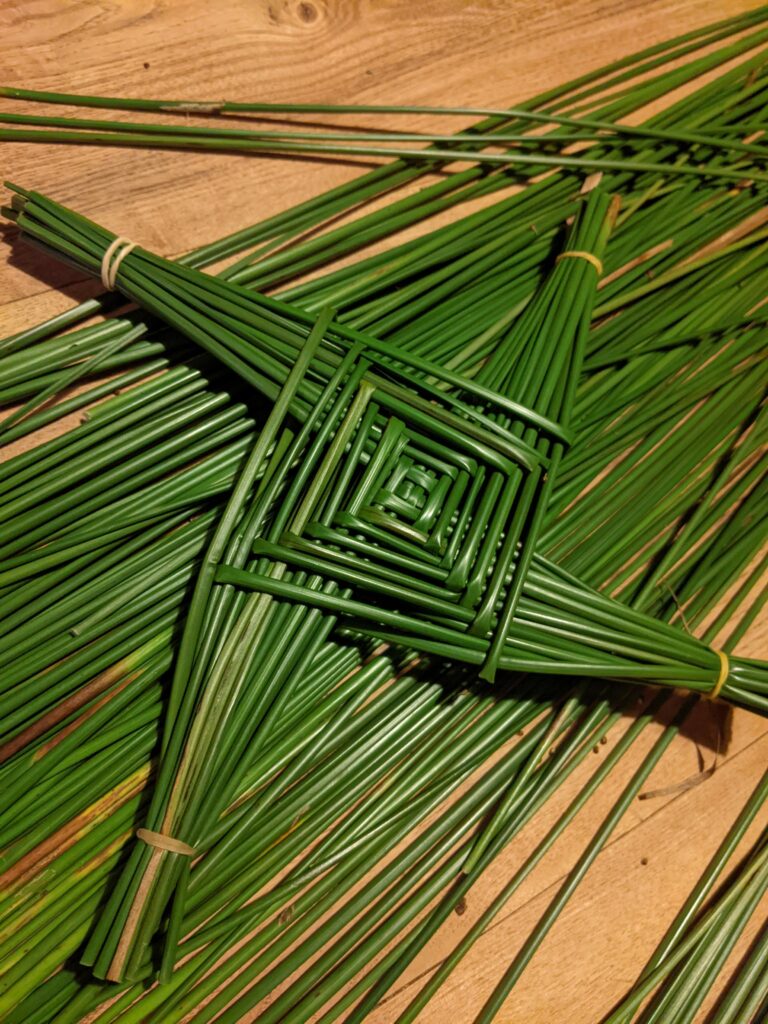As the calendar flips to February 1st, a magical transformation begins. In Ireland, where winter still grips the landscape, whispers of spring emerge with the celebration of Imbolc and St. Brigid’s Day. This special day, blending ancient Celtic traditions with the honouring of one of Ireland’s patron saints, St. Brigid, is a festival rich in history and cultural significance.
Understanding Imbolc and St. Brigid’s Day
Imbolc marks the beginning of spring in the ancient Celtic calendar. The term, believed to mean ‘in the belly’, symbolizes the awakening earth. St. Brigid, a revered figure in Irish history, is known for her kindness, strength, and connection to nature. Her feast day intertwines with Imbolc, adding layers of cultural and spiritual meaning to the festival.
Traditional Irish Celebrations and Customs
In rural Ireland, creating St. Brigid’s Cross is a cherished ritual. These handmade crosses, crafted from rushes, are symbols of protection and hope, linking the present with ancestral traditions. One of my fondest childhood memories is gathering the rushes from the fields, before sitting at the kitchen table with help from my Mum and older siblings as I struggled to make my own cross. It would then be put up in the house, or the barn to keep us all safe.
Modern Celebrations: Inclusivity and Community
Today, St. Brigid’s Day is celebrated globally, with events ranging from parades in Dublin to community gatherings worldwide. These modern festivities reflect the inclusive and communal spirit of the day, inviting people of all backgrounds to join in the celebrations.
Spiritual Reflection and Renewal during Imbolc
Imbolc is also a time for self-reflection and setting intentions for the coming months. Emulating St. Brigid’s qualities of compassion and resilience, this festival offers a moment to pause and embrace the impending change of seasons.
Conclusion: Celebrating St. Brigid’s Day Traditions
St. Brigid’s Day is more than just a date on the calendar; it’s a vibrant celebration of Irish culture, community, and heritage. By participating in these traditions, we keep the spirit of St. Brigid alive and foster connections with our history and with one another.
Additional Resources for St. Brigid’s Day
For those interested in exploring more about St. Brigid’s Day traditions, there are many resources available. Look for websites, books, and community centres that offer insights into this fascinating festival.
This St. Brigid’s Day, let us embrace the joy and warmth of the season, celebrating a time-honoured festival that beautifully marries the past with the present. Happy St. Brigid’s Day to all!

Frequently Asked Questions about St. Brigid’s Day
What is St. Brigid’s Day?
St. Brigid’s Day, celebrated on February 1st, is a traditional Irish festival that marks the beginning of spring. It honours St. Brigid, one of Ireland’s patron saints, known for her kindness and charity.
Who was St. Brigid?
St. Brigid was a Christian nun, one of the patron saints of Ireland, celebrated for her compassion and miraculous deeds. She is also linked to an earlier pagan goddess, Brigid, a key figure in Irish mythology.
What is the significance of St. Brigid’s Cross?
The St. Brigid’s Cross, typically made from rushes or straw, is a symbol of protection and is traditionally crafted on St. Brigid’s Day.
How is St. Brigid’s Day celebrated in Ireland?
In Ireland, celebrations include creating St. Brigid’s Crosses, visiting holy wells, holding feasts, and attending parades and festivals, particularly in Kildare, the location of St. Brigid’s monastery.
Is St. Brigid’s Day a public holiday in Ireland?
Yes, St. Brigid’s Day has recently been declared a bank holiday in the Republic of Ireland, recognizing its cultural and historical importance.
Can St. Brigid’s Day be celebrated outside of Ireland?
Definitely! People around the world celebrate St. Brigid’s Day by participating in Irish cultural activities, making St. Brigid’s Crosses, cooking Irish dishes, and exploring Irish history and traditions.
What are some children’s activities for St. Brigid’s Day?
A popular activity is making St. Brigid’s Crosses. Children can also engage in colouring pages featuring St. Brigid, Irish landscapes, or symbols of spring.
Is there a spiritual or religious aspect to the celebration?
Yes, St. Brigid’s Day has both Christian and pagan roots. It’s a feast day in Christianity and is also associated with the pagan festival of Imbolc, marking the start of spring.
How can one make a St. Brigid’s Cross?
These crosses are traditionally made from rushes or straw. You can find online tutorials with simple weaving instructions suitable for beginners.
What is the historical origin of St. Brigid’s Day?
Originating in pre-Christian times in Ireland, the day was initially linked to Imbolc, a Gaelic festival celebrating the start of spring. It was later Christianized as the feast day of St. Brigid, believed to have lived in the 5th century.
Can non-Irish people celebrate St. Brigid’s Day?
Absolutely! St. Brigid’s Day, a celebration of Irish culture and heritage, is open to everyone interested in experiencing the traditions and learning about Irish history.



